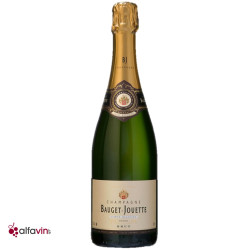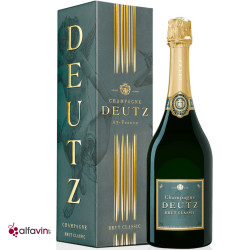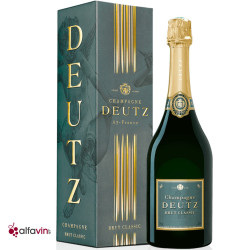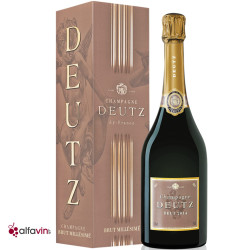- Home >
- Blog >
- advice-champagne-sparkling-wines >
- How sparkling wine is made
In this article, Alfavin.ch explains sparkling wine and its production methods in order to understand how the foam is created in a bottle of sparkling wine. In a market that has become international, where many countries produce their own sparkling wines, it is sometimes very difficult for the consumer to find his way. This article will allow you to see more clearly and will help you in your future purchases in order to make the right choices according to your tastes and desires.
What is a sparkling wine?
A sparkling wine is
a wine with a sufficiently high carbon dioxide content to give it foam and bubbles when it is opened and this sensation of spiciness when the wine is in the mouth. It is one of those wines that are called effervescent and which are opposed to the so-called still wines. A sparkling wine has a pressure higher than 3 bars. We find in this category, wines like champagne, crémant, cavas in Spain or spumante in Italy.
The traditional method to make a sparkling wine?
The traditional method, called méthode champenoise in Champagne, is one of the best known methods. The principle to obtain a sparkling wine is the second fermentation in the bottle. As with any other wine, the grapes are harvested according to a certain degree of maturity. Generally, the sugar levels are lower in order to keep a good level of acidity. Once harvested, the grapes are pressed immediately to extract the white juice as quickly as possible. The first fermentation called "alcoholic" is then carried out. It is the transformation of sugars into alcohol. Once all the sugars are dissolved, the fermentation is finished and the wines are racked, i.e. the juice is recovered from the tank to obtain the "base wine". To carry out the second fermentation, the wines are blended and
bottled with sugar and
yeast called
liqueur de tirage. In the case of Champagne, to be classified as non-vintage, the wine must age for a minimum of 15 months on the lees, and 36 months minimum for vintage wines. Once the aging period is over, the wines are then stirred. This step, called "
remuage", consists of regularly turning the bottles from a lying position to a vertical position (cork down); the objective being to make the accumulated deposit go down slowly towards the cork. When this step is completed, the bottles are disgorged. In the past, this was done on the fly, but today producers use the freezing principle. The bottles are immersed in brine at -23° (just the neck where the deposit is trapped) and then they are disgorged (opened, popping the frozen cork with the deposit). After this step, we add the so-called "liqueur d'expédition", composed of base wine, sucrose and sulfur dioxide. It is the quantity of sugar in this liqueur that determines the sweetness of the champagne (brut, dry, semi-dry, etc...). The sparkling wine is then ready to be sold.
It should be noted that in the case of non-vintage Champagne, the base wines are blended with reserve wines to obtain what is called "the cuvée"; a wine that always has the same taste and defines the style of the producer. In the case of producing a vintage, the producer is obliged to use only 100% of the wine of the year.
Are there other methods to make sparkling wine?
If the traditional method is undoubtedly the best known production method, there are many others. There is
the ancestral method, which is also called artisanal or rural. This process consists in stopping the alcoholic fermentation in progress and bottling the wines. The wines are thus imprisoned with sugar and yeast and finish their fermentation in the bottle. The carbon dioxide formed during this final fermentation in the bottle provides the foam and bubbles when the wine is opened. The second fermentation is not done in the bottle but in a pressurized tank. The wines are then racked and bottled, the gas lost during this stage is compensated by the food carbon dioxide authorized by the specifications. There is also the transfer method. As with the ancestral or traditional method, the second fermentation takes place in the bottle. However, once this stage is completed, the sparkling wines are transferred to a pressure tank where they are filtered, a dosage liqueur is added and then they are transferred to bottles without losing the natural carbon dioxide. The Dioise method is similar to the transfer method except that in this winemaking process, no dosage liquor is added before bottling. There is also a method called "gasification" in which a classic vinification is performed. The wine is then pressurized and gassed with carbon dioxide. Finally, the last known method of
elaboration is the continuous method. This is a wine made in a series of
vessels that takes the wine from a so-called still state to a sparkling state.
Can we make our own sparkling wine at home?
Although, as the old saying goes, "nothing is impossible in life", producing your own sparkling wine is a difficult, if not unattainable, task. Why is this so? First of all, in order for it to be profitable, one must be able to produce a sufficient quantity of bottles; however, in order to produce in large quantities, it requires equipment, space, energy, all of which represents a cost that is far from negligible. Secondly, the theoretical knowledge aspect must be taken into account. Understanding the manufacturing process is one thing, putting it into practice is another. Performing the right operations at the right time, having the right gesture, knowing and recognizing the qualities and defects of the wine to obtain the best possible product, all this is learned over time and experience. Creating your own sparkling wine is even more difficult, because the steps involved in the elaboration of the foam are more technical and require know-how, passed down from generation to generation.
You now know a little more about sparkling wine and its elaboration methods. All that remains is for you to enjoy the many wines in this category. Champagne is perhaps one of the best known ambassadors for this type of wine, but you can also find superb value for money in crémants, and in Italy, with prosecco and in particular the extra-dry cuvée from the Setteanime estate.
Our wines linked to this post

36.00 CHF

49.00 CHF

105.00 CHF

66.00 CHF










